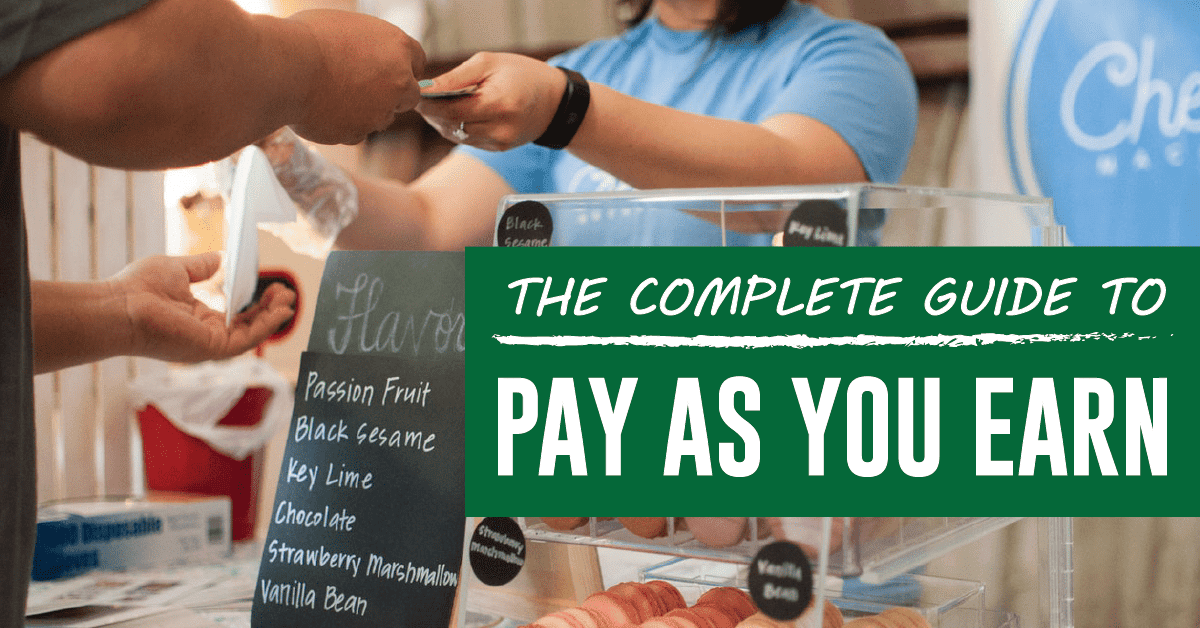
Pay as you Earn, or PAYE, is an income-driven repayment plan that has a lot of benefits for student loan borrowers.
Paying off student loans is hard no matter your income level. Payments can go on for years on end and the added interests can be atrocious.
Thankfully, in the last few years, income-driven repayment programs which allow you to pay a reasonable amount towards your student loans have been instituted.
These can in fact become a source of relief for you if you are in a place where living on a tight budget is your reality.
In today’s post, we will talk about the Pay As You Earn (PAYE) income-driven program - a federal income-driven student loan repayment program that allows you to pay between 10-15% of your discretionary income towards your loans each month and which can be adjusted based on your income and family size.
Let's get into it.
Which Loans Does The PAYE Program Apply To?
Since this is a federal program, naturally, the loans that can be repaid using this program are all federal student loans.
The loan types that qualify for PAYE are:
- Public Service Loan
- Direct Subsidized Loan
- Direct Unsubsidized Loan
- Direct PLUS Loans made to graduate or professional students
- Subsidized Federal Stafford Loans (if they have been consolidated)
- Unsubsidized Federal Stafford Loans (if they have been consolidated)
- Federal Perkins Loans (if they have been consolidated)
- FEEL PLUS Loans made to graduate or professional students (if they have been consolidated)
- FFEL Consolidation Loans that did not repay any PLUS loans made to parents (if consolidated)
- Direct Consolidation Loans that did not repay any PLUS loans made to parents (if consolidated
Who Is Eligible For PAYE?
To qualify for the PAYE program you need to have borrowed your first federal student loan after October 1 2007. If the loan you took out was a Direct or Direct Consolidation loan, you need to have taken it out on or after October 1 2011.
Additionally, the payment you make under PAYE based on your income and family size, needs to be lower than what you pay under the Standard Loan Repayment program. This is to make sure you are not receiving a benefit that your income-to-debt ratio does not qualify for.
NOTE: There is no maximum income limit for qualifying for PAYE. The program does not take into account how much you earn as a raw number, but how much you earn in relation to your federal student loan debt.
How Does PAYE Work?
As mentioned before, PAYE allows you to pay 10-15% of your discretionary income towards your Federal student loans. Furthermore, after 20 years of monthly payments, if you still have a balance, it will be forgiven.
How to Apply For PAYE
Applying for PAYE is fairly easy but before you do, it might be wise to speak with your loan servicer to ascertain if this is the right program for you.
You can find your loan servicer's information by visiting StudentAid.gov/log-in or by calling the Federal Student Aid Information Center at 1-800-FED-AID or 1-800-730-8913 (TTY).
Once you have done that, you will have to file an application via StudentAid.gov or on paper (paper applications are acquired from and submitted to your student loan servicer.
According to the website, it takes most people 10 minutes or less to complete the application electronically.
If you have more than one federal loan servicer, you have to submit separate applications to each one of them.
You will also need to provide documented proof of your income level. This usually constitutes of a recently-filed (no more than two years) tax return.
- If you have not filed a tax return in the last two years or your tax return does not reflect your current income, you can provide alternative documentation such as a pay stub
- If you currently have no income or receive untaxed income only, there will be no further documentation to provide. You will just need to indicate this fact on your application.
It takes a few weeks after your application to be approved. The length of time to approval is usually dependent on whether you submitted electronically or manually.
Once You Are Approved
Under the PAYE program your monthly payments are not a fixed amount you have to pay every month. They can be adjusted based on major changes to your income and family size.
In order to make sure you are paying the right amount based on your income and family size, you would have to make sure you update your loan servicer as soon as there is a changes in what you earned for that month as well as your family size.
To recertify your income and family size once you are all approved for PAYE, you will need to fill out this application and provide proof of the changes.
Even though the recertification process is supposed to happen yearly, you can submit the recertification form at any point during the year if your circumstances undergo a drastic change.
It is however, really important that you recertify your income level and family size by the annual deadline provided by the loan servicer.
VERY IMPORTANT: If you don’t recertify your income by the annual deadline, although you will not be kicked out of the program however, your monthly payments will no longer be based on your income. Your monthly payments will be recalculated so that they are what you would pay under the 10-year Standard Repayment Plan.
Also, if you fail to recertify, any unpaid interest on your loan will be capitalized and thereby increase the overall principal of your loan. This will therefore require you to pay more towards your loans.
So don't miss that deadline!
Is the PAYE Program Worth It?
If you are in a tight spot financially and yet you still want to pay something towards your student loans, the PAYE program (and other income-driven programs) is an excellent idea as it can significantly decrease your monthly student loan payments so you have some breathing space.
However, since you are making lower payments, ultimately over time, you will pay significantly more than if you were on a Standard Repayment Plan.
Also, under current IRS rules, you will have to pay taxes on the part of your loan that is forgiven after 20 years of monthly payments since this is considered income.
So while a great idea in the short-term, over the long-term, this type of plan could end up costing you more.
Also, if you're already on PAYE and have graduate loans, this could be the best place for you in relation to the IDR waiver.
Miscellaneous Facts About PAYE You Should Know
- In determining your income eligibility, if you are married and file tax returns jointly, your overall household income will be taken into account. If you want your income alone to be considered for the program, you need to have filed your tax return separately (married filing separately).
- If your monthly payment does not cover the full amount of interest that accrues on your subsidized loans, the government pays the difference for the first three years
- If you choose to leave the PAYE program for any reason, you can still apply for other income-driven loan repayment programs such as SAVE, IBR, and ICR.

Robert Farrington is America’s Millennial Money Expert® and America’s Student Loan Debt Expert™, and the founder of The College Investor, a personal finance site dedicated to helping millennials escape student loan debt to start investing and building wealth for the future. You can learn more about him on the About Page or on his personal site RobertFarrington.com.
He regularly writes about investing, student loan debt, and general personal finance topics geared toward anyone wanting to earn more, get out of debt, and start building wealth for the future.
He has been quoted in major publications, including the New York Times, Wall Street Journal, Washington Post, ABC, NBC, Today, and more. He is also a regular contributor to Forbes.
Editor: Clint Proctor Reviewed by: Chris Muller
